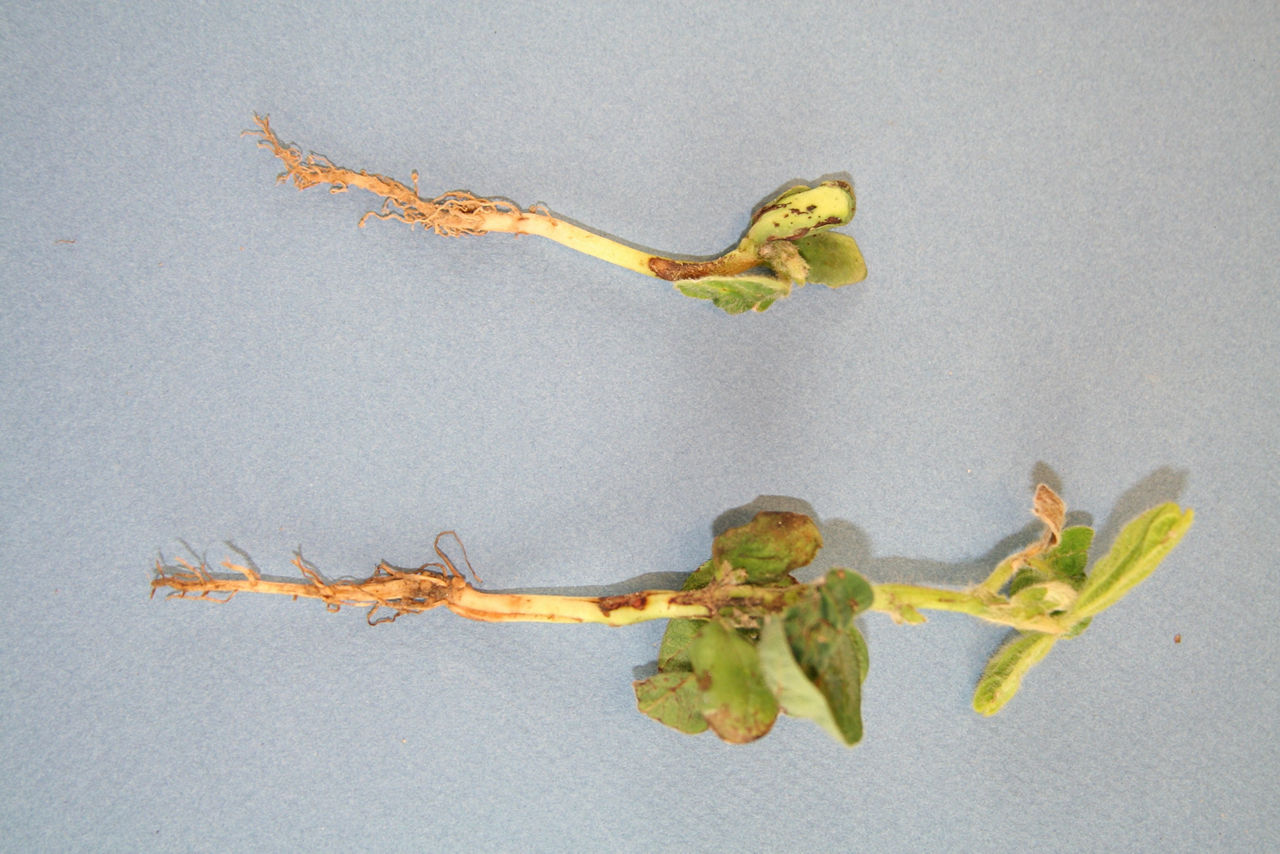3 MIN READ
Soybean Germination Issues
June 14, 2021
After focusing on bringing seed from hopper to soil, now is the time to evaluate soybean stands. Several issues can impair germination and emergence; however, not all of them affect yield potential. In some cases, action can be taken this spring to optimize soybean stands.
CLICK ON AN ISSUE FOR MORE INFORMATION
What You See
- Sulfentrazone and flumioxazin herbicides are PPO inhibitors (Group 14).
- Necrotic lesions on cotyledons and the hypocotyl, malformed leaves, and occasionally death of the primary stem.
- More severe in poorly drained, low spots in fields.
- Acetochlor, metolachlor, dimethenamid, and pyroxasulfone herbicides are long-chain fatty acid inhibitors (Group 15).
- Heart-shaped leaflets.
- Less likely to cause soybean injury than the Group 14 herbicides.
- Metribuzin herbicide is a photosystem II inhibitor (Group 5).
- Interveinal chlorosis and necrosis on emerged leaves .
- Symptoms occur on unifoliate and first trifoliate leaves, not later-emerging leaves.
- Risk increases in fields with high pH soils due to greater availability of the herbicide.
- Pendimethalin and trifluralin herbicides are mitotic inhibitors (Group 3).
- Swelling of the hypocotyl, reduced root growth, delayed emergence.
- More likely in cool, wet soils where emergence is slowed, and more herbicide is absorbed by the emerging seedling.
- Mesotrione is a bleaching (HPPD inhibitor) (Group 27).
- New leaves initially turn white, then yellow.
- More likely in soils with pH below 6.5 and low microbial activity due to dry or cool conditions
What You Do
- Don’t compare to corn fields - soybeans are more sensitive than corn to herbicide carryover.
- Take stand counts and document recovery over the next few weeks.
- Examine the apical bud- if severely damaged or the plant is girdled, it may not have full recovery.
- Avoid field operations that could place additional stress on the crop.
- Avoid tank mixes with flumioxazin + pyroxasulfone prior to heavy rains.


Sources:
Hartzler, B. 2017. Evaluating herbicide injury on soybean. Iowa State University. https://crops.extension.iastate.edu/.
Anderson, M. and Hartzler, B. 2020. Identifying common herbicide symptoms in soybeans. Iowa State University. https://crops.extension.iastate.edu/blog/bob-hartzler-meaghan-anderson/identifying-common-herbicide-symptoms-soybean.
4002_S2